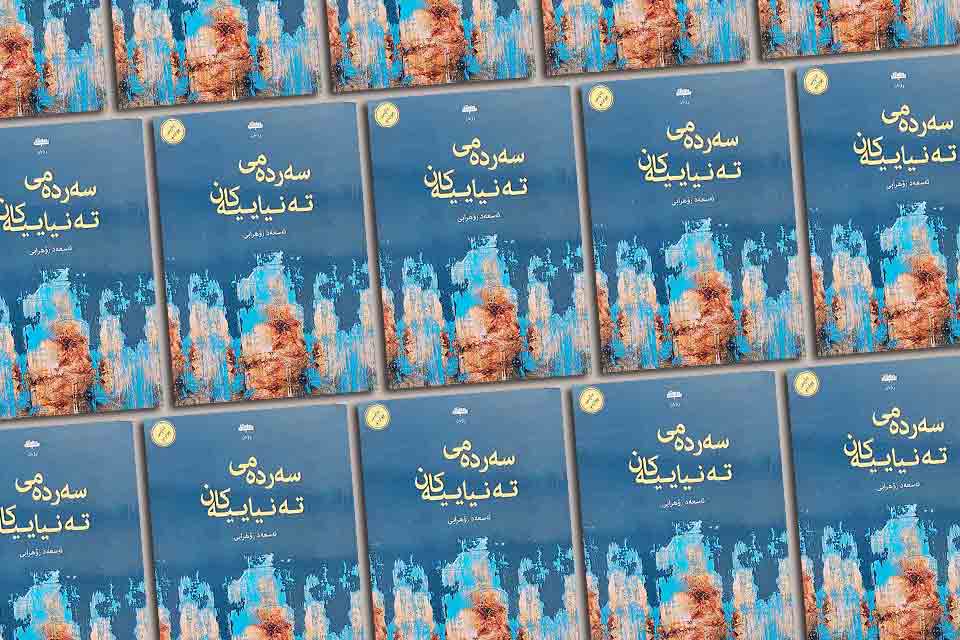A Novelist from the Kurdish Metropolis of Earring: Asaad Zohrabi’s The Age of Lonelinesses by Zakarya Bezdodeh

Printed in 2023, The Age of Lonelinesses is Asaad Zohrabi’s debut novel. Born in 1978 in Ravansar, Kermanshah, Iran, Zohrabi has already launched 4 volumes of poetry. His first foray into the novel style has garnered enthusiastic acclaim from each readers and critics, attaining a fourth version inside simply two years. Moreover, the work has been honored with the Kaal Literary Award—an area accolade in Kurdish literature—and Hajar Pen Award, a prestigious ebook award.
Set within the Kermanshah Province in western Iran within the Kurdish metropolis of Ravansar—referred to within the novel because the Metropolis of Earring as a result of metropolis’s form—The Age of Lonelinesses narrates a story of unrequited love between Zana and Avin. (Zana is a Kurdish male title that means “educated”; Avin is a Kurdish feminine title that means “love.”) Above the Earth dwell ethereal beings often known as Lonelinesses, who every await their flip to imagine human type. In line with the novel’s cosmology, each human being as soon as existed as a loneliness within the sky earlier than selecting to tackle materials type. This imaginative framework permits the writer to transcend standard boundaries of time and house, infusing the narrative with a particular sense of magical realism.
The story set on Earth, within the Metropolis of Earring, unfolds with minimal plot twists. Zana, the protagonist and narrator, recounts the event of his relationship with Avin, a neighboring woman a number of years his senior. Starting from his early childhood, Zana reveals how Avin ultimately distances herself from him and marries a person named Manoochar. He additionally discovers that Asem—a mischievous boy who steadily visits Avin’s dwelling—is, the truth is, her half-brother. Because the story is offered from Zana’s perspective, the reader positive aspects solely partial perception into Avin and different characters, which finally highlights his unreliability as a narrator—significantly when different characters reveal among the secrets and techniques.
Nonetheless, the comparatively easy love story unfolds in a novel setting and sociopolitical context. The Age of Lonelinesses takes place in a small Kurdish metropolis in Iranian Kurdistan through the early years after the Islamic Revolution and all through the Iran–Iraq Struggle (1980–88). The destiny of Zana and the opposite characters is deeply intertwined with these historic and political occasions, significantly those who formed the lives of Kurds in Iran. The trajectory of the plot—and particularly the destinies of the characters—is inextricably linked to the Iraqi aerial bombardments. A number of central characters are killed in these assaults, and Zana himself is completely paralyzed because of an Iraqi airstrike.
What distinguishes the novel as a thought-provoking and unconventional work is the presence of an extra narrative layer, offered by an extradiegetic omniscient narrator who transcends linear time, making a metanarrative by means of the novel’s construction. The realm of the Lonelinesses shifts fluidly between previous and current, and geographically from Kurdistan to distant lands spanning Europe to Mongolia. Inside this expansive story, the novel engages with profound philosophical, historic, and political questions regarding the common human situation whereas additionally reflecting particularly on the Kurdish expertise.
The novel engages with profound philosophical, historic, and political questions regarding the common human situation whereas additionally reflecting particularly on the Kurdish expertise.
Themes of democracy, freedom, and humanity are explored by means of these marginal historic narratives. But maybe probably the most compelling side lies in how Kurdistan and the Kurdish persons are represented inside these mythic and symbolic layers. It’s right here that the novel revisits among the most harrowing traumas and tragedies endured by the Kurds, together with the chemical bombing of Halabja and the Anfal genocide carried out beneath Saddam Hussein in Iraqi Kurdistan. These narratives additionally provide different views on historic figures, presenting lesser-known or reimagined tales. As an example, the Iranian monarch Karim Khan Zand—usually portrayed as a benevolent and peace-seeking ruler—is depicted in a extra advanced gentle, as is Nader Shah Afshar, who’s portrayed as a merciless determine who blinded his personal son, descended into insanity, and was finally assassinated by his shut commanders. In a single significantly imaginative episode, the novel introduces a symbolic portrayal of Adolf Hitler, who, on the earth of the Lonelinesses, existed as Fats Loneliness earlier than his incarnation as a human. This allegorical depiction means that the origins of human cruelty and violence lie within the depth and density of existential loneliness. In the end, it’s by means of these prolonged tales that the connection between the characters within the Metropolis of Earring and the metaphysical world above is step by step revealed, giving the novel its layered complexity and philosophical depth.
Studying Zohrabi’s novel proves to be each intellectually partaking and demanding. The narrative steadily shifts to historic occasions that diverge from these offered in standard historic accounts, mixing parts which might be partially rooted in actuality with these which might be purely imaginative. This synthesis of reality and fantasy compels the reader to rethink established views, significantly relating to Kurdistan and the future of its individuals.
College of Kurdistan

0 Comment